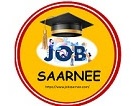Operating systems (KCS401)
Course Outcome ( CO) Bloom’s Knowledge Level (KL)
At the end of course , the student will be able to understand
CO 1 Understand the structure and functions of OS K1, K2
CO 2 Learn about Processes, Threads and Scheduling algorithms. K1, K2
CO 3 Understand the principles of concurrency and Deadlocks K2
CO 4 Learn various memory management scheme K2
CO 5 Study I/O management and File systems. K2,K4
DETAILED SYLLABUS
Unit I
Introduction : Operating system and functions, Classification of Operating systems- Batch,
Interactive, Time sharing, Real Time System, Multiprocessor Systems, Multiuser Systems,
Multi process Systems, Multithreaded Systems, Operating System Structure- Layered structure,
System Components, Operating System services, Reentrant Kernels, Monolithic and Microkernel Systems.
2 marks important question
Long Answer Question with Answer
Most Frequently Asked Question with Answer
Unit II
Concurrent Processes: Process Concept, Principle of Concurrency, Producer / Consumer Problem,
Mutual Exclusion, Critical Section Problem, Dekker’s solution, Peterson’s solution, Semaphores,
Test and Set operation; Classical Problem in Concurrency- Dining Philosopher Problem, Sleeping
Barber Problem; Inter Process Communication models and Schemes, Process generation.
2 marks important question
Long Answer Question with Answer
Most Frequently Asked Question with Answer
Unit III
CPU Scheduling: Scheduling Concepts, Performance Criteria, Process States, Process Transition
Diagram, Schedulers, Process Control Block (PCB), Process address space, Process identification
information, Threads and their management, Scheduling Algorithms, Multiprocessor Scheduling.
Deadlock: System model, Deadlock characterization, Prevention, Avoidance and detection, Recovery from deadlock.
2 marks important question
click here
Long Answer Question with Answer
Most Frequently Asked Question with Answer
UNIT IV
Memory Management: Basic bare machine, Resident monitor, Multiprogramming with fixed
partitions, Multiprogramming with variable partitions, Protection schemes, Paging, Segmentation,
Paged segmentation, Virtual memory concepts, Demand paging, Performance of demand paging,
Page replacement algorithms, Thrashing, Cache memory organization, Locality of reference.
2 marks important question
click here
Long Answer Question with Answer
click here
Most Frequently Asked Question with Answer
click here
UNIT V
I/O Management and Disk Scheduling: I/O devices, and I/O subsystems, I/O buffering, Disk
storage and disk scheduling, RAID. File System: File concept, File organization and access
mechanism, File directories, and File sharing, File system implementation issues, File system protection and security.
2 marks important question
click here
Long Answer Question with Answer
click here
Most Frequently Asked Question with Answer
click here
Text books:
1. Silberschatz, Galvin and Gagne, “Operating Systems Concepts”, Wiley
2. Sibsankar Halder and Alex A Aravind, “Operating Systems”, Pearson Education
3. Harvey M Dietel, “ An Introduction to Operating System”, Pearson Education
4. D M Dhamdhere, “Operating Systems : A Concept based Approach”, 2nd Edition,
5. TMH 5. William Stallings, “Operating Systems: Internals and Design Principles ”, 6th Edition, Pearson Education
LAB PROGRAM
Program 1. Study of hardware and software requirements of different operating systems (UNIX,LINUX,WINDOWS XP, WINDOWS7/8
Program 2. Execute various UNIX system calls for
i. Process management
ii. File management
iii. Input/output Systems calls
Program 3. Implement CPU Scheduling Policies:
i. SJF
ii. Priority
iii. FCFS
iv. Multi-level Queue
Program 4. Implement file storage allocation technique:
i. Contiguous(using array)
ii. Linked –list(using linked-list)
iii. Indirect allocation (indexing)
Program 5. Implementation of contiguous allocation techniques:
i. Worst-Fit
ii. Best- Fit
iii. First- Fit
Program 6. Calculation of external and internal fragmentation
i. Free space list of blocks from system
ii. List process file from the system
Program 7. Implementation of compaction for the continually changing memory layout and calculate total movement of data
Program 8. Implementation of resource allocation graph RAG)
Program 9. Implementation of Banker‟s algorithm
Program 10. Conversion of resource allocation graph (RAG) to wait for graph (WFG) for each type of method used for storing
graph.
Program 11. Implement the solution for Bounded Buffer (producer-consumer)problem using inter process communication
techniques-Semaphores
Program 12. Implement the solutions for Readers-Writers problem using inter process communication technique -Semaphore
OPERATING SYSTEM 999+ MCQ BASED Most Important QUESTION WITH ANSWER | Operating System MCQs with Answer
